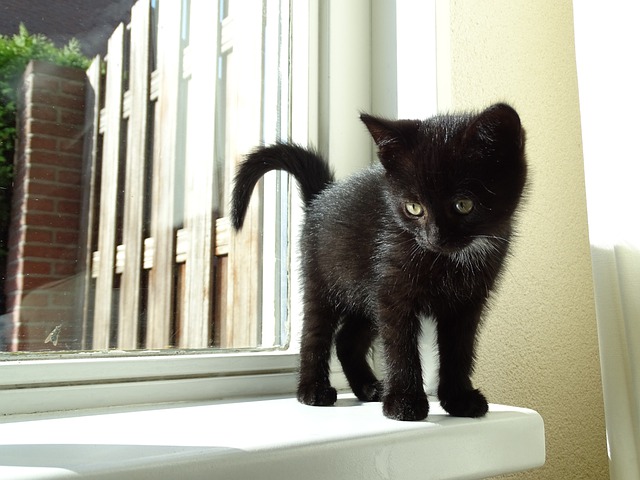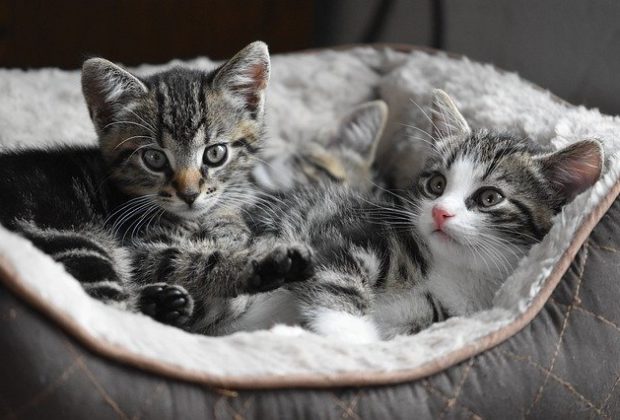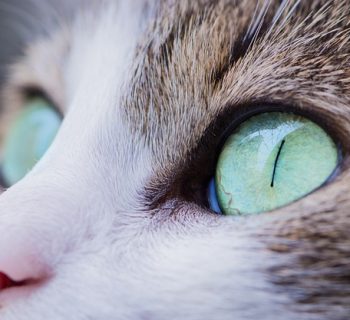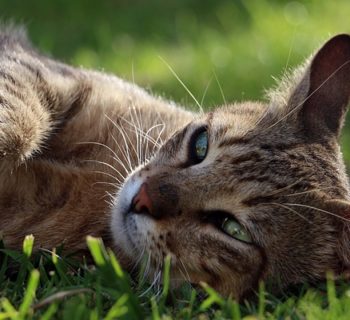Our kittens are super-adorable and cute at all stages of their growth, and it’s one of the several reasons we just love them. However, this can make telling their true age difficult, especially when dealing with strays that somehow warmed their way into our hearts and home. Even with non-stray kittens, you want to be certain that the breeder was honest about the kitten’s age.
SSo, how to tell the age of a kitten? How do you know your cat’s actual age to offer the best and most appropriate care possible?
We’ll discuss all of that and more about discovering the age of a kitten. While the methods discussed here give you a close estimate of your kitten’s age, they cannot tell exactly when your kitten was born.
Table of Contents
How Old Is My Kitten? How Do I Tell a Kitten’s Age?
Their Teeth
If your kitten is yet to get its adult teeth, it is relatively easier to guess its age. Kittens generally get their incisors around their 2nd to 4th week of life. This is closely followed by the premolars appearing around the 3rd to 4th week. It could take a few weeks longer for some cats, but most kittens will have their baby teeth out by the 8th week.
Check; does your kitten have all of his temporary teeth out yet? He is probably around 8 to 10 weeks of age if he does.
The Sixth Month and Upward
By their sixth month of life, most kittens would have had the temporary teeth replaced by the adult teeth. Now, the next thing you want to do is determine accurately to an extent if your cat truly has all of its permanent teeth to help you estimate its age.
Examine
Temporary teeth are much smaller than permanent teeth, with some as small as rice grains. They are also pointier and whiter. So the size and other teeth features should help you determine its age.
Also, check closely if the permanent teeth are white. If they still are, then your cat is probably around 16 weeks old. Then, check the back teeth; if it has yellowish stains/tartar buildup, your cat is likely around 1 to 2 years old.
It doesn’t end there; now, check for tartar buildup in all or most of the teeth. Your cat is likely around 3 to 5 years old if there is. Wear-and-tear is something you still have to look out for, and this is usually observed when kittens are approximately 5 to 10 years of age. You may also notice some missing teeth and lots of tartar buildup around this age.
The Eyes
The first part of this step is only mandatory if you have a very small cat. Check if he has opened his eyes yet. Kittens rarely open their eyes until around 10 days to 2 weeks old. A kitten in this condition is likely around the age mentioned above range. Also, at this stage, kittens depend entirely on their mothers and so require extra care in her absence.
If the kitten’s eyes are already open and look older, check for eye cloudiness. Like us, felines can develop cataracts as they age. If the cat has cloudy eyes, it is likely around 11 years or older. Also, check the iris; these are smooth at the “kitten/baby stage,” but they start to look crackly and jagged as the kittens grow older.
The Weight
This is another way to estimate the age of a kitten apart from signs like the eye-opening, eye cloudiness, and teeth stage/condition. To a large extent, you can guess the kitten’s age by its weight.
We must state here that estimating a kitten’s age by its weight may not be very accurate for certain reasons. For one, there are several cat breeds, and they all grow at different rates. However, if you’re able to identify the exact breed, you should be able to guess its age by its weight.
Unless the kitten looks malnourished or is suffering from certain health issues, weight can be a fairly easy way to tell its age.
Below is a timeline of a kitten‘s weight stages by months, but usually, kittens under five months of age weigh around a pound for each month of their life.
The 3-Month-Old Kitten Size
If we’re going by the 1 pound per month of life guideline above, kittens weighing around 3 pounds should be about 3 months old. At this point also, most kittens are developed enough to be separated from their feline family and go to their new homes (that is if they’ve had their mothers and siblings until this stage).
6 Months of Age
Many kittens will gain weight steadily and predictably until their 5th month of life. Again by the pound per month guideline, your kitten should be around 5 or 6 months of age if it weighs up to 5 pounds. Kittens around this age are said to be at their juvenile stage. They also reach puberty and sexual maturity around this time. After this period, the weight will no longer be a reliable way to tell their age. So, if your cat shows signs of sexual maturity, it can be an indicator that they’re at least 5 months old.
Body Build
Feel your cat’s body to tell how muscular it is. Older cats usually have loose, hanging skin, and you may observe that their shoulder blades seem to protrude more. On the other hand, younger cats are much more likely to have compact and toned bodies.

General Behavioral Clues
Apart from sexual maturity and the accompanying behaviors, which will be discussed later, other behavioral clues may help you estimate your kitten’s age. However, you have to be very observant to catch some of these behaviors.
Younger cats are often more playful, while older cats would rather sleep most of the day instead of playing with toys. So it is safe to say that the older a cat is, the less likely it is to be impressed by the idea of playing.
Also, at around 3 months and upwards, kittens will usually begin to try to fend for themselves and form their own territories. They are already equipped with the mental and physical capacity to survive on their own even though they look vulnerable or simply too young to survive alone.
It is not uncommon to find male cats at this stage roaming across longer distances from home in search of a partner. This is usually done with caterwauling, a loud cry made by kittens to attract females and keep potential competition (usually males) out of their territory.
Females, on the other hand, can go into heat from their fifth month and upwards. Just like with the male cat, you may notice behavioral changes at this point.
During a feline’s heat cycle, you may observe the following behavioral signs:
- Urine spraying
- Vocalizing
- Rolling on the floor
- A sudden demanding/pushy behavior
- Rubbing face on surfaces and things
- Attention-seeking
- Wanting and begging to go outside (common with house cats)
- Wiggling the hind end when the spine gets stroked
If you observe any of these behavioral changes during a heat cycle, your cat is likely around five months of age or above.
Final Thoughts on Telling a Kitten’s Age
Regardless of their breed, felines tend to grow rapidly, especially during their first few months of life, a lot like the human child. In this article, we discussed some ways how to tell the age of a kitten. Knowing your cat’s age is highly important because raising a kitten requires a level of care and commitment that is appropriate for their age.
Once you know the behavioral and physical traits to look for when estimating, you’ll have an idea of its age even though you weren’t there to witness its birth.
However, if you’re still uncertain of how to estimate your kitten’s age or not patient enough, so would like a quick, professional assessment, you should consult your vet for her opinion. Nothing ever truly compares to the experienced pair of eyes with our fur babies. They’ve probably been on the job for several years and have had to be around and observe several breeds of kittens and their different stages of growth.
Another thing you can do is try to estimate your kitten’s age with the guidelines above, then request your vet’s assessment to see if it matches your estimates. Who knows? The results may end up being exactly the same, and that could be a huge confidence boost on your pet parenting skills.
If you decide to use both, let us know the result of your findings and your vet’s assessment in the comment section below.
Thoughts/questions? Share in the comment section below.
About the Author
Kirsten Heggarty
Kirsten created The Pet Handbook with the aim of sharing her knowledge about pets, pet food, healthy habits, and more. All of her advice is based on years of her own experience with her pets, and feedback that she has received from grateful readers about her tips. If you want to know more please read the About Me page.









